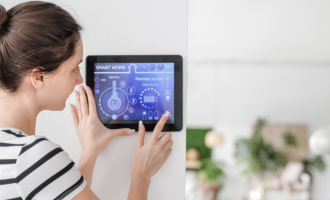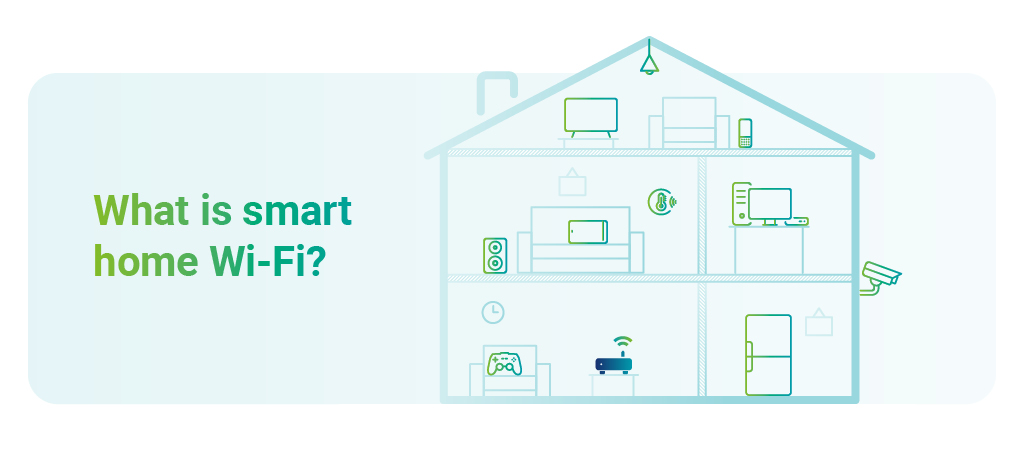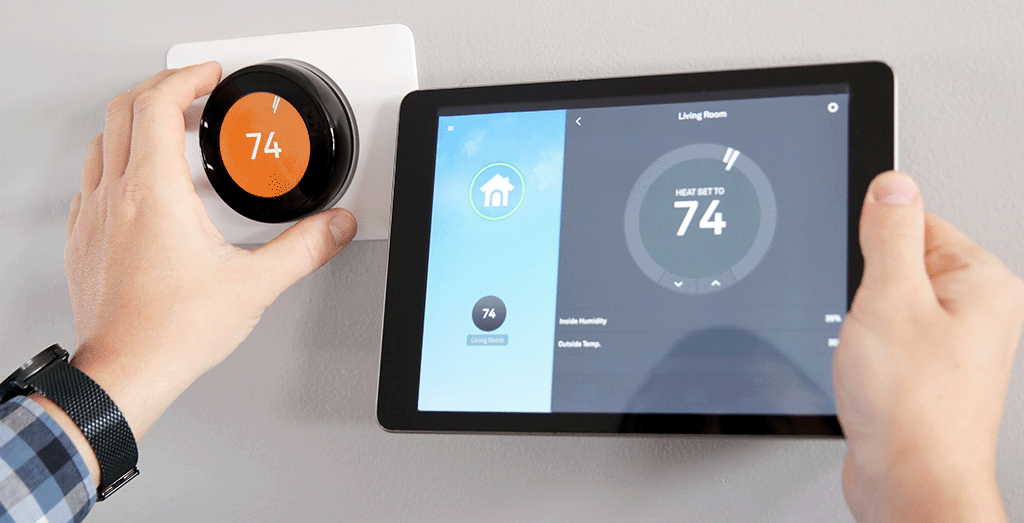
Insights
What is smart home Wi-Fi?
A smart home is fitted with devices that allow you to control everything from the lights, music, security camera and your heating via your smart device, whether that’s a phone, computer or tablet.
With more ways to make your home ‘smart’ than ever before, the tech is becoming increasingly popular among everyday homeowners. In fact, a poll by Smart Home Week revealed that 57 per cent of adults now have some sort of smart device to control appliances such as the lights, security, kettle or vacuum cleaner!
Just some of the benefits of a smart home include increased security, cost savings, convenience – and let’s not forget – a whole lot of fun!
Smart homes – the importance of good connectivity
The most common way to make ‘smart’ connections is by the internet, using Wi-Fi. The connections can be wired (attached into a port on a device, for example) or wireless. Wireless connections are the easiest to set up. However, it’s really important to have the right broadband package to make your smart home a reality.

Smart home vs connected home: what’s the difference?
These two terms are often used interchangeably, however, they are different, and here’s why:
- A connected home is used to describe any device/s with connecting ports/antennae that link a piece of technology to another ‘operating environment.’ A baby monitor, with a TV that lets you see and hear what’s happening in another room, is an example of a connected home device. Connected devices usually operate on separate sensors and microprocessors.
- A smart home – also known as a ‘home automation system’ – takes the connected devices one step further, creating a single panel or dashboard for monitoring all your connected devices in one place. The set-up is more complex, but the end result is a far superior user experience, and is the established way to go for larger installations.
In short, the difference between a connected home and a smart one is in the setup. In a connected home, you might search through different apps on your phone to control your Nest doorbell, your Alexa sounds, and your Phillips Hue lights.
However, in a smart home, there is only one panel; the devices all converge, giving you greater control. Moreover, because these devices are joined in the same environment you can allow them to share data, so the devices become ‘smarter’ over time.
Do smart homes slow down Wi-Fi?
Yes, but it’s not the whole picture. Some smart devices are quite simply more data hungry than others. A smart doorbell, monitoring peoples’ comings and goings in 4K, combined with a spot of League of Legends, will have a far more significant impact on your Wi-Fi speed than a set of smart plugs for the whole house.
How many smart devices can be used on Wi-Fi?
A regular router can run around 200 devices, just not all at once! The diagram below shows the devices that consume the most bandwidth.
What are the advantages and disadvantages of smart home devices?
Advantages of a smart home include:
Cost-savings
The ability to monitor all your appliances, and the energy that they’re using from a single place – such as your smartphone – makes it easier to check on consumption and to tailor usage accordingly. In short, there’s no need to panic because you went out unexpectedly and left the heating on! Some devices can also monitor temperature and humidity within the rooms of the house and adjust it automatically, reducing heating and air-conditioning bills.
Increased security
Smart enabled devices can provide reassurance about the visitors going to and from your property, using video streaming to give real-time information about what is happening while you’re not there. This, plus things like the ability to lock and unlock doors with the touch of a button, is super-handy for busy households with lots of things to do in the mornings!
Extra convenience
Smart homes allow you to control things like turning the heating on/off when you’re not at home, heat up the cooker so that you arrive home to a ready-cooked meal and even wake you up in the morning by opening the curtains. By doing lots of tasks to a schedule, or ad-hoc, smart controlled devices can make it easier for busy households to get through their day.
Making independent living possible
The ability to manage things with a touch of a button – or by a voice command – is making it possible for older people, or those with disabilities, to live more independently than ever before. For example, a person with advanced Parkinson’s disease might find appliances difficult to navigate, or find it a struggle to walk down the stairs to switch off a light. Having smart switches on a timer, or on/off voice controls, can be a big help.
Increased wellbeing for medical conditions
Smart wearable devices can also amass huge amounts of data on the person’s movements at certain times of day, for example, giving medical professionals valuable information when it comes to reviewing medication. Just a simple example, but the possibilities are certainly exciting.
Preventative maintenance
The benefits of remote monitoring don’t just apply to security. The ability to control appliances that look after conditions – both inside and outside the property – can help keep things in top condition. For example, reducing damp and sun damage within rooms and even watering the plants when an unexpected heatwave hits (and you’re in another country).
Overall improvement in wellbeing
Let’s not forget that a smart home can be a fun and happy place to be. For example: you could use smart-enabled appliances to wake you up to relaxing sounds; to create amazing light effects to entertain guests and create party rooms; and provide a multitude of ways to customise your home theatre using voice and smartphone controls.

What are the disadvantages of having a smart home?
Cost of large scale installations
A full scale smart home automation system can cost many thousands however, the cost savings over the long run may more than outweigh the investment. However, smart lights or plugs can be purchased for under £100, making a smaller scale smart home accessible to many.
Configuration can be complex
Creating a user-friendly smart home setup can be complex, although manufactures are making strides to ensure that homeowners can do much of this themselves. If you require any help in this area, then a specialist such as Jurassic will be happy to help.
Insecure passwords
Smart homes are at risk from hacks, just the same as any internet-enabled device. So, the usual procedures apply: create unique passwords for each device, and don’t share these with anyone else on your network to reduce the risks. For more tips, read Home Broadband Online Safety: Need To Know Guide.
In conclusion
Thanks to fibre broadband, smart home Wi-Fi is becoming a reality for many households. With the right broadband package from a trusted provider, there is no reason why you too can’t experience the many benefits. Whether you’re looking for fibre broadband in Exmouth or any county in the south west or just simply ‘fibre curious’, we would love to talk to you. Get in touch!
Latest news
A network for the future
Why Jurassic Fibre?


